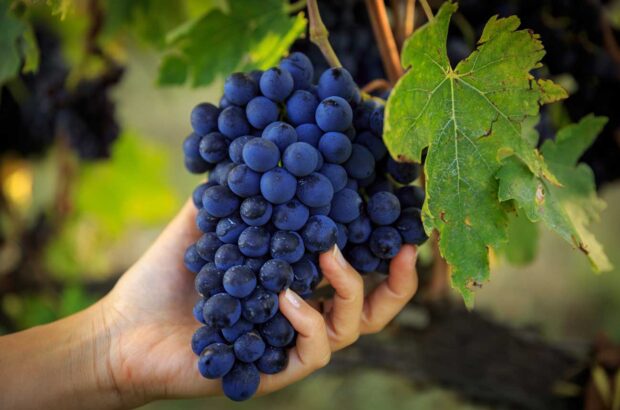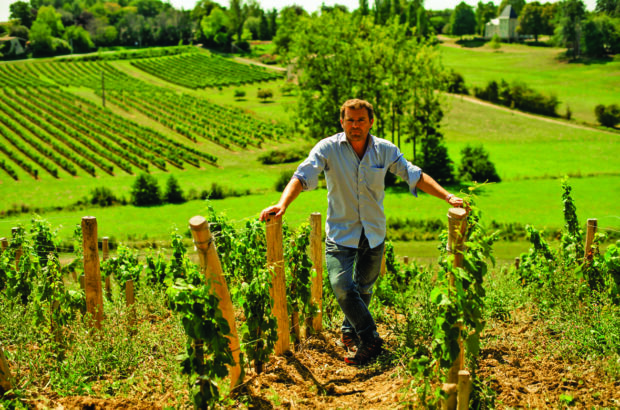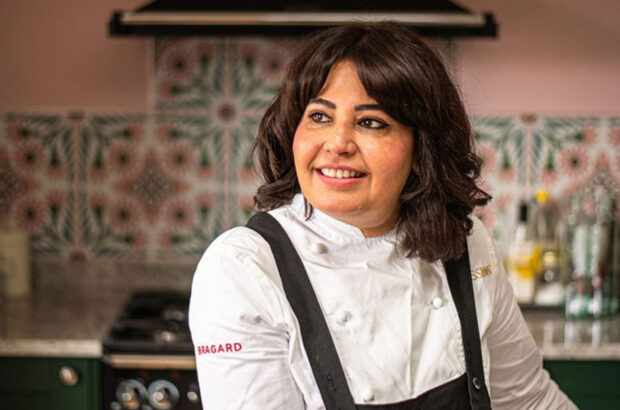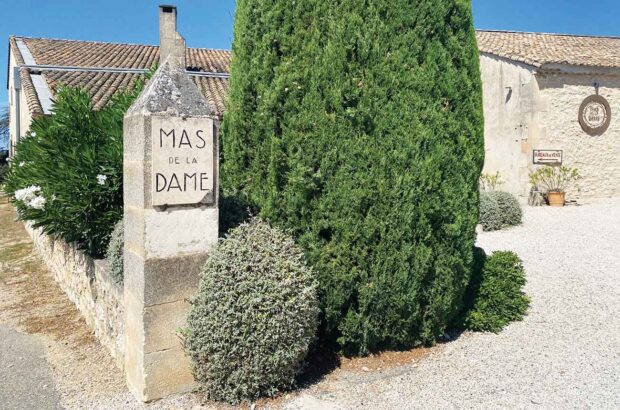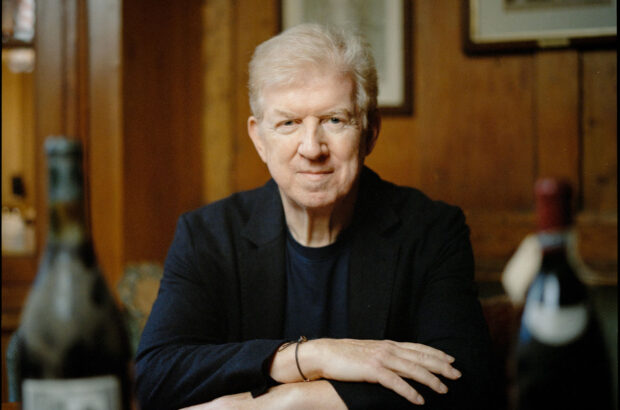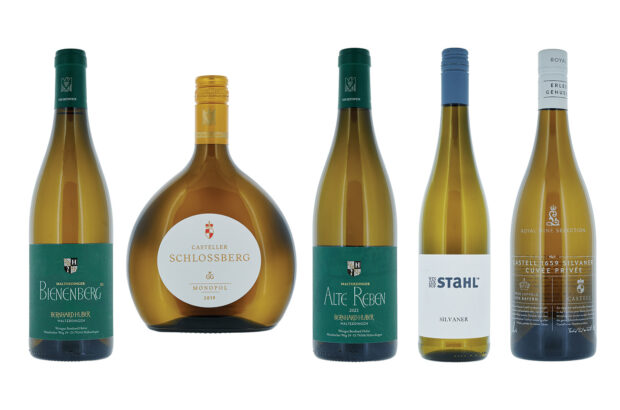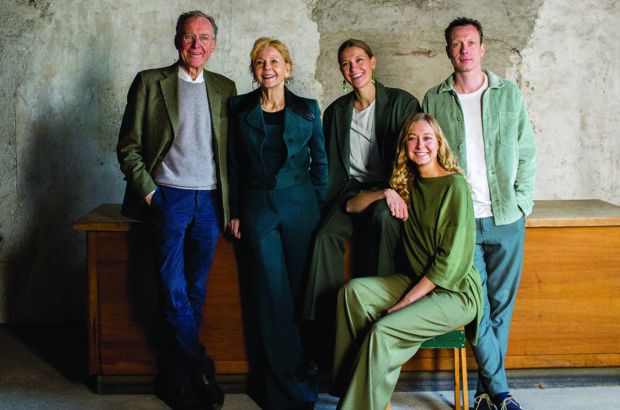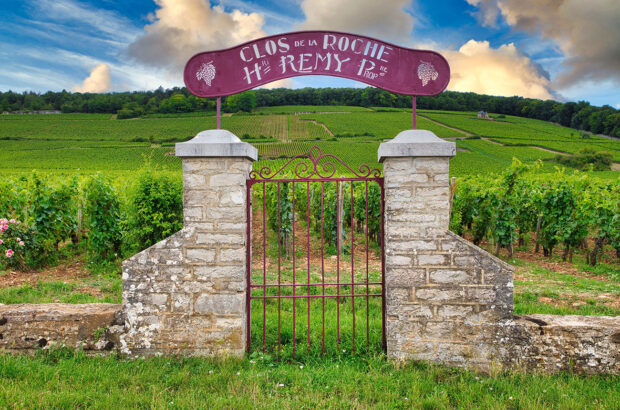There are said to be about 880 bodegas in Mendoza, ensuring that Argentina’s elevated western province has long been a destination of choice for wine lovers. Vineyards here range from about 430m to 2,000m altitude, and while Malbec rules the roost, an ever-growing cast of varieties such as Semillon, Pinot Noir and the Criolla grapes (principally Torrontés, Criolla Chica, Criolla Grande and Cereza) means there’s plenty for wine-curious travellers to savour beyond the headline-act red.
Whether it’s horseback riding over the Andes or matching chocolate with wine, 300 days of sun and exciting wine-related activities keep visitors returning to key wine regions Maipú, Luján de Cuyo and Uco Valley. Late summer (early March) welcomes the arrival of the Fiesta Nacional de la Vendimia grape harvest festival, while in winter (peak season July to September) powder lovers can hit Las Leñas’ slopes, and après-ski on Malbec.

Fiesta Nacional de la Vendimia
Mendoza: The facts
According to Wines of Argentina’s 2021 annual report, Mendoza produced 76% of all Argentinian wine across its 146,815ha, cultivating some 39,250ha of Malbec (20% of the national total). The other most widespread varieties included Bonarda (about 14,800ha), Cabernet Sauvignon (10,500ha) and the Criollas (12,500ha combined, mostly Criolla Grande).
Languid paired tasting menus have long tempted foodies, but Mendoza’s dining scene has rocketed over the past few years to claim the title of Argentina’s most diverse food region (after capital Buenos Aires). Celebrity chef Francis Mallmann (@francismallmann) has long been associated with Mendoza, his open-fire techniques creating a show of their own. While the asado (barbecue) experience is guaranteed t0 please, a new wave of chefs is captivating palates putting wine first and showcasing star local products such as heirloom tomatoes and Andean native potatoes; veggie-led menus are finally in fashion.
A slew of restaurants has opened – and not just in bodegas. The glorious Andes range lends itself to outdoor dining experiences at restaurants such as Cundo (@cundoaltamira) and Ruda (@ruda.cocina) in Uco Valley, and Chirivia (@_chirivia) in Potrerillos. But 2023’s most anticipated launch was Angélica – Cocina Maestra at Catena Zapata.
There’s more good news given that this surge in dining spots is being matched by hospitality. Recent openings include acclaimed winemaker Susana Balbo’s SB Winemaker’s House & Spa Suites in Chacras de Coria and La Morada in the Uco Valley; these offer comfy accommodation to suit all budgets.
One of the global Great Wine Capitals network and the host in October 2022 of the World’s Best Vineyards awards, Mendoza should be high on your list of must-visit wine destinations. With the five-day guide that follows, travellers can visit both traditional and contemporary bodegas while soaking up the ultimate in wine lifestyle…
Day 1: Maipú
To the south of central Mendoza city, the eastern department of Maipú is where European varieties Cabernet Sauvignon and Malbec began to be cultivated in the mid-19th century, spurred on by a surge in immigration, particularly from Italy from the 1880s onwards: Maipú and Luján de Cuyo together are known as the Primera Zona (‘first zone’). While it’s usually considered that Mendoza produces mountain wines, Maipú is its lowest-elevated district, topping out at a relatively rather lowly 700m-940m above sea level.
While Maipú is often overlooked for being distant from downtown Mendoza, its quiet country roads lined with peach orchards, olive groves and vineyards are a breath of fresh air. Open farmlands mean wineries aren’t rubbing elbows; it can take half an hour to drive between them, so hire a car (Mendoza’s signage has come on significantly in the past three years), or even a driver, as taxis can be scarce. If you’re staying in Mendoza city, you can hop on the Metrotranvía tram; alight at Gutiérrez station – just across the road is the well-located Wine and Ride, where you can hire bikes and staff will help to plan a tour of local vineyards and wineries to suit your agenda. Another alternative is the hop-on, hop-off Bus Vitivinícola, which offers half and full-day options.

Bike tours from Wine and Ride in Mendoza city
Among its cluster of at least century-old bodegas, just a handful in Mendoza still use foudres of 40,000 litres or more – close to the tram station, Bodegas López, founded in 1898, is one of them. Fourth-generation winemaking director Carlos López and his brother Eduardo, general manager, respect tradition by continuing to create cask-aged Bordeaux-style reds, while driving forward with a line of daily drinkers including Sauvignon Blanc.
A top seller is Montchenot, a range of old-vine blends dominated by Cabernet Sauvignon, with bottlings cask-aged for five, 10, 15, 20 years or more. A free guided visit makes for a fascinating history lesson, while other tour and tasting packages are available, from about £5-£50; for an additional class, visit the Museo del Vino y la Vendimia museum a short distance away along Calle Ozamis. Other top Maipú tastings include Bodega Trapiche, housed in its impressive 1912 Florentine-style building along Calle Nueva Mayorga, while Luigi Bosca, further out along Ruta 60, recently converted its centenarian Finca El Paraíso property into a restaurant, headed by chef Pablo del Río. Mil Suelos (@milsuelos) is also due to open a parrilla experience – cooking large cuts of meat on a metal grate over an open wood fire – later this year.
Santa Julia’s story is more contemporary but no less legendary. When José Zuccardi developed a new irrigation system, he began cultivating vineyards in eastern Maipú district Santa Rosa in 1963 to showcase it. Taking up the baton from his father, José Alberto began to cultivate high-quality grape varieties such as Tempranillo in 1982, naming that project after his daughter.
Today, Julia Zuccardi is responsible for tourism and hospitality, while her brother Sebastián is winemaking director at the certified organic winery. Aesthetes will enjoy browsing works by Mendoza-based artists, while the more active can tour the estate by bike. It counts two restaurants: enjoy a picnic or a full-blown asado experience at Casa del Visitante; its empanadas (filled pastry pockets) were named Argentina’s best in 2018. Meanwhile, Pan y Oliva uses extra virgin olive oil in every dish, the ideal vehicle to showcase Zuelo, youngest sibling Miguel’s line of liquid gold.
Where to eat
Choose from one of nine El Enemigo pairings to accompany a three-course lunch or dinner at Casa Vigil close to the Mendoza river near El Paraíso.
Where to stay
Well-appointed suites and log fires await at Hotel Club Tapiz, a delightful former governor’s home built in 1890.

Trapiche, to the southeast of central Mendoza
Day 2: Luján de Cuyo
The western side of Primera Zona, Luján de Cuyo lends its name to one of two denominación de origen controlada (DOC) zones in Mendoza, while harbouring sub-districts including the Geographical Indications (GI) Agrelo, Las Compuertas and Vistalba. Its central hub is Chacras de Coria, former vineyards and farms gobbled up by private housing estates.
Regardless, Luján is home to a wide array of bodegas, such as vigneron Carmelo Patti’s authentically rustic cellar door on San Martín, where you can sample Bordeaux-style blends, or the recently opened Anaia Wines in Agrelo, about 20 minutes by road south on San Martín – here, in a tribute to the national tea drink, the producer has developed the first mate gourd-shaped concrete fermentation tanks.
Given the urban proximity, activities are located closer together, so those looking to burn off a few wine calories can pedal to tastings. Elevation is very gradual, so there’s no real need for a mountain bike; maps guiding you to the likes of Alta Vista, Clos de Chacras and Viamonte are provided when you rent from Vistalba Bikes on Embalse Potrerillos.
Luján is home to a second Mendoza bodega that focuses on traditional winemaking. Though its building was constructed in 1890, the Weinert family takes pride in the art of cooperage, restoring old casks at Weinert Bodegas y Cavas, which was founded in 1975. After visiting the red-brick cellars and beautifully crafted toneles casks, enjoy a vertical tasting that, if you’re in luck with your timing, could even include a 1977 Malbec.
At the other end of the winemaking spectrum you’ll find Riccitelli Wines in Las Compuertas on the western edge of Luján. Matías Riccitelli is both playful and serious, sourcing old-vine Chenin Blanc and Merlot from Río Negro, Patagonia, while also creating the low-intervention and pét-nat range Kung Fu, which gets snapped up by the Buenos Aires hipster drinking set. Book a tasting and a table at the bistro, helmed by passionate seed collector Juan Ventureyra, whose plant-focused lunch menu is a refreshing break from asado.
Recent restaurant-in-bodega openings include chef Francis Mallmann’s outdoor dining experience Ramos Generales at Kaiken off Roque Sáenz Peña; La Jamonería at Vistalba, nearby, further along the main road; and in the same area, new for 2023, enjoy charcuterie pairing at Mauricio Vegetti’s La Bodeguita at Lui Wines (@luiwines).

Planta Uno food hall in Godoy Cruz, Mendoza
As many wineries only open for lunch, Brindillas restaurant in Chacras is great intel for a dinner date, while a 15-minute drive north in Godoy Cruz is Planta Uno. Here, Bodega Lagarde’s Sofía Pescarmona overhauled a former metals factory to create a well-curated indoor food hall that includes wine bars and small eateries, avoids big brand names and, importantly, opens until 1am.
Where to eat
At 5 Suelos – Cocina de Finca in Las Compuertas, chef Patricia Courtois recounts Argentina’s history paired with the Durigutti brothers’ wines on her 14-course Menú Historia.
Where to stay
A welcome massage and in-room sauna is the first step to relaxing bliss at SB Winemaker’s House & Spa Suites, Mendoza’s most illustrious 2022 hotel opening, which includes La VidA restaurant.

La VidA indoor dining room at SB Winemaker’s House & Spa Suites
Day 3: Agrelo
Cross Ruta 7 – the road linking the Atlantic ocean with the Pacific – to Agrelo, in the southern part of Luján de Cuyo. Home to a host of big-name wineries located at about 950m elevation, take your pick of fabulous vintages in a vineyard-to-glass situation, because the options are numerous and the wineries again in relatively close proximity, mostly off Ruta 7. You can opt to tuck into a paired lunch at Ruca Malen, a picnic at Espacio Crios, farm-picked pistachios at Caelum, a bubbly bistro lunch at Chandon, or a biodynamic tasting at Chakana. Remember all bodegas require advance reservations.
Two Agrelo top guns are Viña Cobos and Catena Zapata – named World’s Best Vineyard 2023 – located a 10-minute drive away. There are two carefully curated tastings at Paul Hobbs-run Cobos, now on its 25th vintage: and now Angélica – Cocina Maestra gives it some architectural competition in the shape of a majestic Italian-style villa complete with watchtower and basement distillery. Throwing open its mighty glass and steel doors in February 2023, the Catena family’s many award-winning vintages take centre stage at its first venture into hospitality beyond tastings – fourth-generation managing director Laura Catena and winemaker Alejandro Vigil join forces to challenge chef Iván Azar to match dishes to wine.

Relaxed tasting area at Viña Cobos in Agrelo
Other recent Agrelo openings include Quimera (@quimerabistro), just off Ruta 7, from Achaval Ferrer, whose culinary approach combines a farm-to-table concept with fire. If you’re keen to squeeze in more tastings and eat on the hop, grab a home-cured ham sandwich at the food truck where Ruta 7 meets Cobos street. An unexpected experience is Las Palapas, housed next to vineyards and the scenic Potrerillos dam, a cool Sunday afternoon electronic music party that attracts internationally reputed DJs.
Where to eat
Enjoy a hands-on dining experience picking your salad and crimping empanadas before savouring the lunchtime fine dining menu at Zonda.
Where to stay
Book a luxurious villa among vineyards then chill at the spa after a hard day’s tasting at Cavas Wine Lodge, Mendoza’s only Relais & Châteaux property.
Day 4: Uco Valley
From Chacras de Coria, it’s a 60- to 90-minute drive south to Tupungato, Tunuyán and San Carlos, the Uco Valley’s three principal departments, where snow-capped mountains dominate the landscape. Seeing the 6,570m-high Tupungato volcano means Uco is within reach and a chance to get closer to nature – and the Andes.
Grapes and orchard fruits have long been cultivated in the valley and Salentein was a pioneer in making wine at high elevation in Tunuyán in the late 1990s; located on Ruta 89, the bodega boasts majestic architecture to complement its world-class Pinot Noir, Chardonnay and Malbec. Within the estate, stop by Killka gallery, whose exhibits bring together Argentinian and Dutch artists.
A five-minute drive from Salentein is Domaine Bousquet, a certified organic bodega that also produces kosher Malbec; ask to sample it on the one-hour guided visit. As sustainability is Domaine Bousquet’s main philosophy, the seasonal menu at its restaurant, Gaia, is strictly organic, chef Adrián Baggio sourcing many ingredients from the winery’s orchard.
In nearby Gualtallary, winemaker Matías Michelini’s Sitio La Estocada is a lesson in biodynamic agriculture. Helped by grazing animals, Matías’ family tend the vineyards from which he sources grapes for his Passionate Wine range. An experiential gem is the lunar cycle dinner, on full and new moon nights.
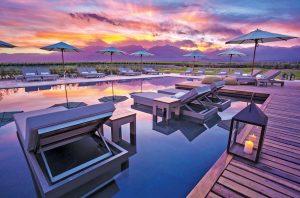
The Vines of Mendoza, in Los Chacayes, Uco Valley
Half an hour’s drive away on Ruta 94, The Vines of Mendoza has grown so exponentially since conceiving its private vineyard project – enabling members of the public to realise their dream of owning a vineyard and making premium-quality wine – it now houses successful spin-off winery projects spawned from the original idea, namely Corazón del Sol and SoloContigo. SuperUco, the joint Michelini brothers project, is also based here; all three are open to the public. A recent addition to the Vines project is Mitre Fortín distillery, the producer (in a different location) of Principe de los Apostoles, Argentina’s first premium gin brand.
A lovely wining and dining alternative is to mount a four-legged friend for a mountainous expedition. The gauchos from the Cabalgatas de la Quebrada del Cóndor (@quebradadelcondor) lead small groups through cattle pasture and into the Andes on relaxed steeds that might huff and puff on steeper slopes. The view from the top is incredible, proffering a true feel of the valley’s breadth. Ride it or trek it – if you’ve worked up an appetite, asado (and a glass of vino) awaits at the log cabin.
Where to eat
Breathe in fresh mountain air while clapping along to contagious live folk music, paired with empanadas, at the charming Bodega La Azul.
Where to stay
Luxury hospitality pioneers in Uco, many of The Vines of Mendoza’s spacious villas have fabulous Andean views; take your swimwear so you can enjoy a dip in the outdoor jacuzzi.

Cabalgatas de la Quebrada del Cóndor
Day 5: San Carlos & Vista Flores
When a bodega picks up the World’s Best Vineyard prize three consecutive times, you ought to squeeze everything you can from it. That accolade went to family-run winery Zuccardi Valle de Uco in Paraje Altamira, San Carlos, between 2019 and 2021. It’s fair to say third-generation winemaker Sebastián Zuccardi improves with age: his Finca Piedra Infinita Gravascal 2018 recently picked up 100 Parker points. Flavour-neutral concrete egg tanks let the vineyard parcels do the talking, while marvellous Andean views and succulent T-bone steaks are calling at Piedra Infinita restaurant; you can easily spend a day savouring a guided visit, tasting and paired lunch.
Another nearby estate where you can while away a day wining and dining is the Michel Rolland-founded Clos de los Siete, which houses the wineries of Flecha de los Andes, Monteviejo, Cuvelier Los Andes and Diamandes. An ambitious winery project, Clos de los Siete involves the four bodegas, run by four Bordeaux families and encompassing 850ha of vineyards, contributing elements to a single Bordeaux-style blend, while also making their own wines. And if you’re in need of 360° panoramas, drop Gabriel Dvoskin of Canopus Vinos a line. His low-intervention, cool-climate Pintom Pinot Noir and Y La Nave Va Malbec from El Cepillo have been exciting Argentinian sommeliers for years; given that he hosts sporadic yet intimate vineyard tastings – conducted with as little embellishment as his vintages – it’s worth getting in touch.
Where to eat
Whatever the weather, wrap up warmly for an al fresco lunch at Cundo, not far from Zuccardi just outside La Consulta, where chef Seba Juez prepares a classy six-course Uco-focused menu.
Where to stay
Check into a vineyard home at La Morada Lodge, just west of Vista Flores, where the cellars are stocked by top sommelier Andrés Rosberg, then toast the peace of Los Chacayes.
How to get there
There are numerous daily flights from Aeroparque Jorge Newbery in Buenos Aires to Mendoza. Flight time is around 90 minutes. Hire a car at Mendoza’s El Plumerillo airport; it’s a 30-minute drive to Maipú and Luján de Cuyo, 90 minutes to the Uco Valley.

Credit: Maggie Nelson


